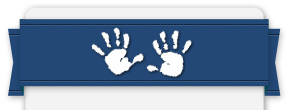Cancer – F.A.Q.s
WHAT IS CHILDHOOD CANCER?
Cancer is a mutation of the cells in the body. In children (youngsters under the age of 19), these mutations can take place very early in life — sometimes even before birth – as the cells divide and multiply.
Cancer-causing genetic changes are sometimes thought to occur by chance and at other times, because children are born with a predisposition that increases their risk of developing cancer.
WHERE DOES CANCER OCCUR?
Cancer is not just one disease: there are more than 12 major types of paediatric cancers and over 100 sub-types which can be found in different parts of the body, such as in the brain, abdomen, lymph nodes, nervous system, muscles, bone and skin, among other places.
Cancer is not contagious and cannot be passed from one person to another.
Childhood cancer cannot generally be prevented or identified through screening.
WHAT IS THE DIFFERENCE BETWEEN ADULT AND CHILDHOOD CANCER?
The causes of adult cancers are often related to lifestyle factors such as exposure to the environment, diet, alcohol intake and smoking.
The causes of children’s cancers are still largely unknown.
Adults are most affected by breast, lung, prostate, bowel and bladder cancers.
Children are most affected by acute leukaemias, tumours of the brain and nervous system, the lymphatic system, kidneys, bones and muscles.
HOW IS CHILDHOOD CANCER DIAGNOSED AND TREATED?
By the time childhood cancers are diagnosed, they tend to be at a more advanced stage and grow more aggressively.
Treatment depends on the type of cancer and can include surgery, chemotherapy, radiation therapy or sometimes immunotherapy. Sometimes a patient receives more than one of these treatments.
The length of time needed for treatment differs depending on the type of cancer. Treatments can take several months or even years.
WHAT ARE THE AFTER-EFFECTS OF TREATMENT?
While many of the same treatments — such as chemotherapy, radiation and surgery — are used for children and adults, children are more likely to suffer significant after-effects such as:
• – stunting of growth
• – cognitive dysfunction
• – organ failure, as a result of the harsh impact of treatment on their developing bodies
• – depression
WHAT CAN I DO TO HELP?
§ GIVE BLOOD
• – It’s something that every healthy person can do, there is no age limit and costs nothing but a little of your time.
• – Cancer and cancer treatments can damage bone marrow, where red blood cells and platelets are produced. When patients have low red blood cell and platelet counts, they cannot fight infection.
• – Blood and platelet transfusions can enable patients to receive critical treatments needed to fight cancer.
§ KEEP IN TOUCH
• – If your friends’ child has been diagnosed with cancer, stay in contact. In person, via telephone, by video conference applications (e.g. WhatsApp, Zoom, Skype, etc.) or social media.
• – Keep in touch. Knowing that you care really matters. Your friends might not be able to reply, but reassure them that you don’t expect an immediate response.
§ FAMILY HELP
• –Offer to collect the other children from school, babysit or take siblings for an outing,
• – Find creative ways to give parents a break.
§ SHOP FOR GROCERIES
• – If you can, shop for groceries or prepare home-cooked meals … that will be one less worry for parents. Meals that can be frozen and re-heated can be especially helpful.
§ HELP WITH CHORES
• –Offer to do some housework or gardening, walk the dog or run a few errands.
§ PARTICIPATE
• –Participate in fundraisers such as STEP-BY-STEP-TEMBRE for your local children’s hospital or childhood cancer organisation.
• – Make it an outing for family fun!
• – Your donations fund medical equipment and vital medical research.
§ MAKE A DONATION
• – Donate to your local children’s hospital or childhood cancer organisation. Your gift can support life-saving patient care and ground-breaking research.
§ ORGANISE A FUNDRAISER
• – Get together with friends to plan a unique fundraiser, or contact your local children’s hospital for ideas.






